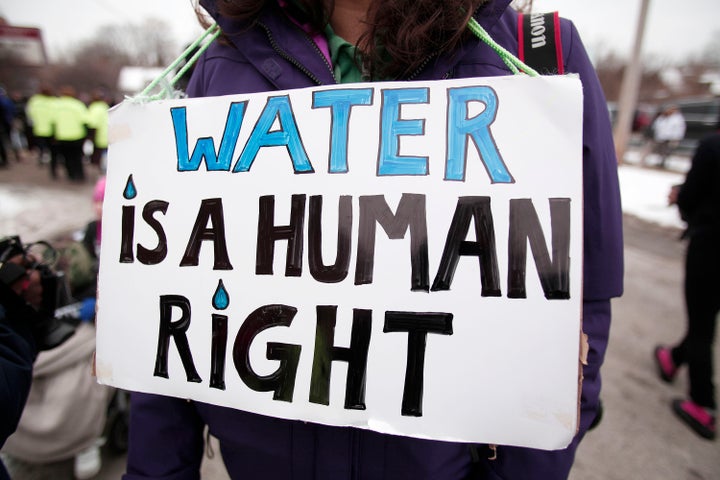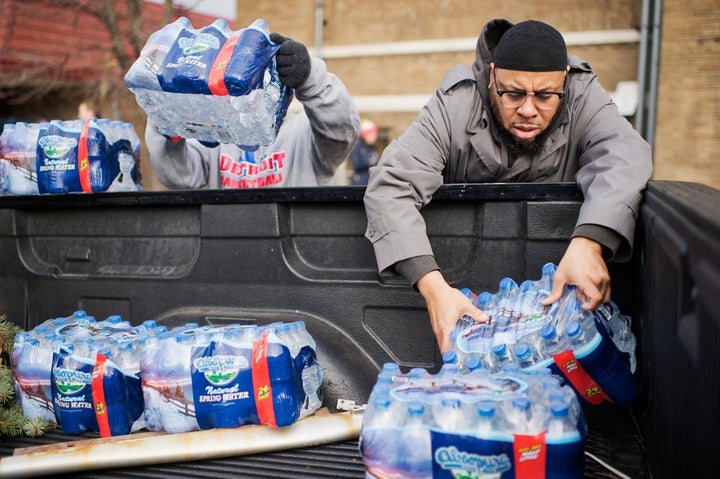
A vast majority of Americans want public officials to invest in the nation’s water systems in an effort to avoid tragedies like the lead contamination crisis in Flint, Michigan, and many appear to be willing to pay higher water bills to help do just that, according to a new poll released Wednesday.
The national poll of adults, conducted by American Viewpoints and Hart Research and commissioned by the Value of Water Coalition, reported that 95 percent of respondents wanted to see more investment in water infrastructure.
In addition, 47 percent of respondents were willing to personally pay more for water to help support investments in their local water systems, a number that increased to 60 percent after respondents were given additional information about water issues.
In a Wednesday press call introducing the poll results, Hart Research president Geoffrey Garin said the willingness to pay more was “a remarkably high starting point” when compared to how customers have typically reacted to possible rate increases for electric or natural gas service.
And Garin pointed to similar levels of support to personally fund infrastructure improvements among respondents who identified as Republican or Democrat as evidence that the issue is resonating with Americans regardless of politics.
“Water really stands out among the broad array of issues in the country today that transcends partisanship, where interest in having safe and environmentally-friendly water systems cuts deeply across party lines and unites people across party lines,” Garin said.
The Value of Water Coalition has emphasized that water bills are generally “affordable relative to other utilities” and that the average American water bill “does not reflect the cost of service,” however, there is reason to be somewhat skeptical of the poll’s results. The coalition's members include both public and private water agencies, plus business and community leaders who have a natural interest in higher water rates.
The coalition has argued that further investment is necessary to meet the nation’s costly water infrastructure needs, currently estimated by the Environmental Protection Agency to cost more than $600 billion. Those needs include replacing aging, leaky pipes and old water mains.
The American Water Works says the price tag could exceed $1 trillion in the coming decades and replacing lead pipes in Flint alone will cost an estimated $55 million.
Mary Grant, director of the Washington, D.C.-headquartered Food and Water Watch advocacy group’s Public Water for All campaign, acknowledged that the United States has massive water infrastructure needs, but also emphasized that affordability remains key.
“We need investment in the water systems but we can't put that burden disproportionately on middle- and working-class families,” Grant told The Huffington Post by phone.

Flint, she argues, is a clear example of that. In a recent analysis, Food and Water Watch found that the residents of the poverty-stricken Michigan city have been forced to pay some of the highest water rates in the nation.
Grant believes more federal assistance is necessary to fund water system improvements.
“There’s some sort of disconnect there when many Flint residents simply can’t afford their bills,” she added.
For its part, the coalition’s poll did find lower-income respondents, who represented 31 percent of their overall sample size, were only slightly less likely to agree to pay a higher water bill to protect their local water system’s health.
Thirty-seven percent of respondents who reported earning less than $40,000 in pre-tax household income last year said they strongly agreed that they would be willing to pay more, compared to 39 percent of respondents earning $75,000 or more.
Radhika Fox, director of the Value of Water Coalition and CEO of the U.S. Water Alliance, also noted that affordability was a major priority for the coalition and applauded the efforts of Congresswoman Marcia Fudge (D-Ohio) to push for a low-income sewer and water assistance program.
The coalition’s poll reached 1,000 adults by phone in late January 2016. The poll’s margin of error is +/- 3.1 percent at 95 percent confidence.
______
Joseph Erbentraut covers promising innovations and challenges in the areas of food and water. In addition, Erbentraut explores the evolving ways Americans are identifying and defining themselves. Follow Erbentraut on Twitter at @robojojo. Tips? Email joseph.erbentraut@huffingtonpost.com.
Also on HuffPost:

